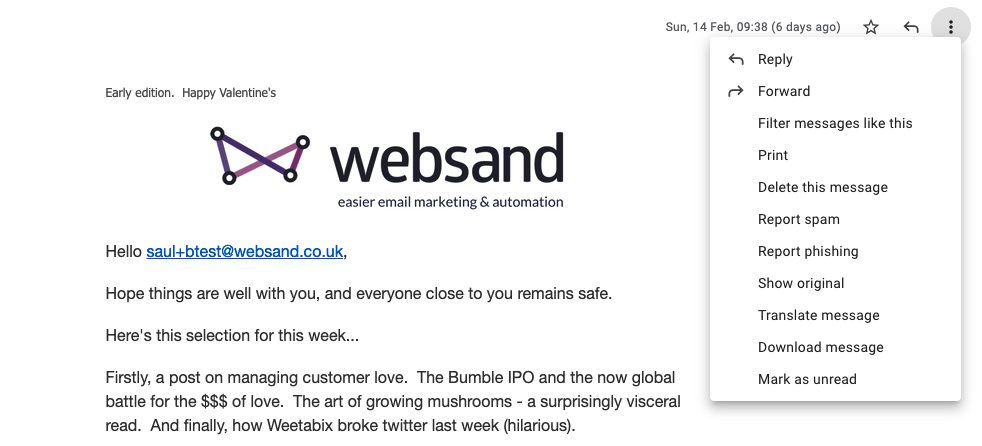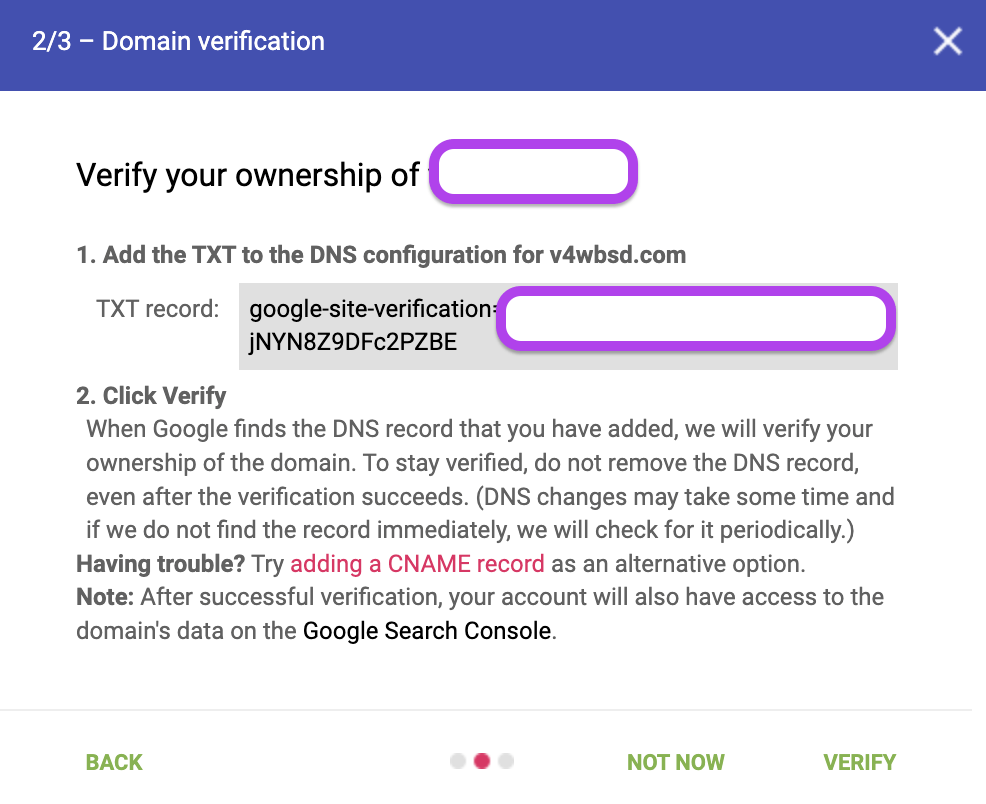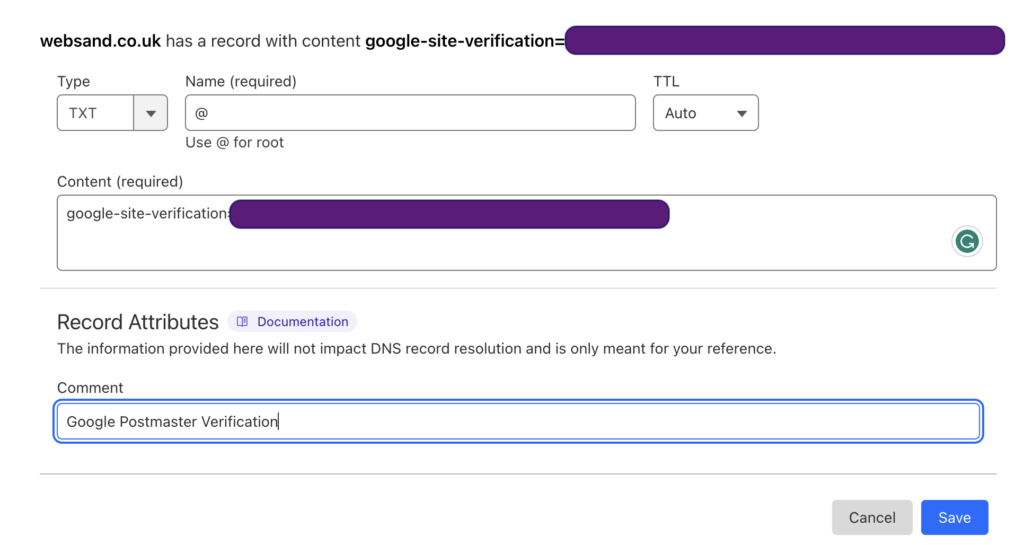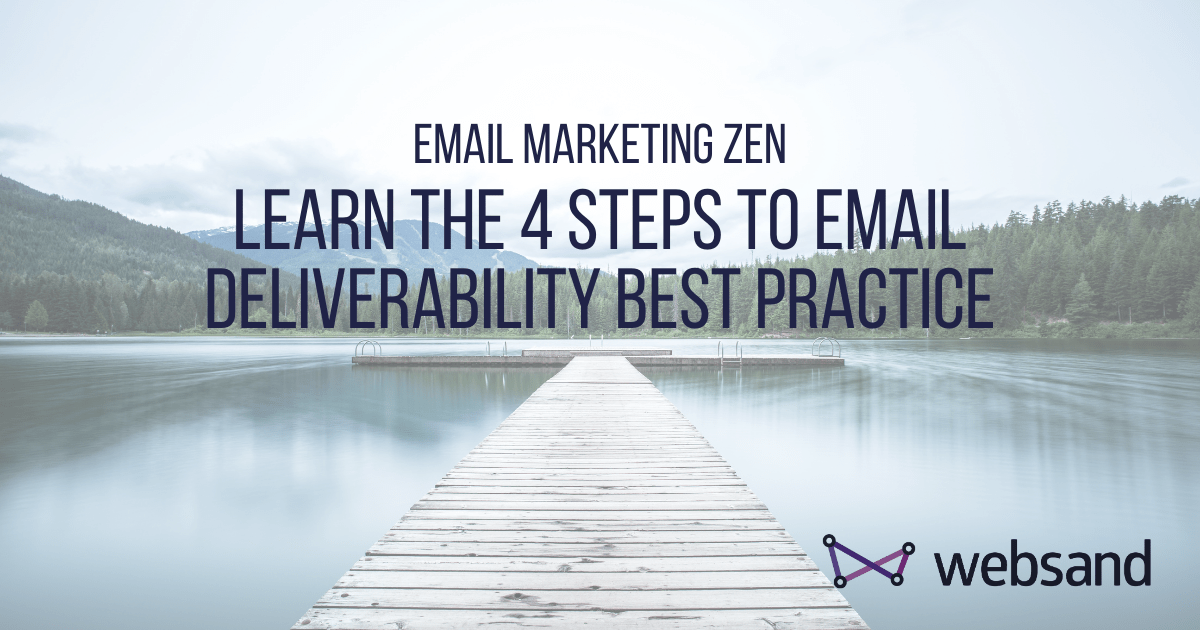Time to apply some email deliverability best practice
A dropping email deliverability rate can drive you crazy and cost you money. Putting some email deliverability best practice in place solves that problem and keeps the money coming in.
It used to be that the technical setup side of email marketing was about following best practice and really only valid for the heavy senders and those that really wanted to do things properly. However, those days are over.
From Feb 2024, Google and Yahoo! have led the charge for email marketing best practice setup to become a mandatory requirement. So if you are using email marketing, this is a post you are going to need to read carefully and follow the steps piece by piece. This is now a process you cannot ignore.
In this post we are going to explain the technical side of email marketing, to help you identify the potential areas where your email marketing might be falling over. After all if you can’t deliver a message what’s the point in sending it.
One of the key problems in dealing with email deliverability is in the set up of your email marketing so let’s look at how this works.
Four things influence your email deliverability
Get these factors managed and under control, and all you’ll need to worry about is creating email marketing your audience want to read 🙂
How Email Deliverability works… a man goes into a bar (a real life example).
Email marketing looks a simple process, but it’s more complicated than you might expect.
Let me paint a picture of the scenario that happens whenever you send an email.
This is how email deliverability works.
Except rather than trying to have an email accepted by a recipient’s inbox, you are trying to gain access to a bar. It’s actually a very similar process.
If you try to get into a bar in the United States you are asked for ID.
Unlike the UK, this is a mandatory requirement within the United States where the drinking age is 21.
It doesn’t matter how old you are you could be 56. If you aren’t recognised and known to the people running the establishment. You are going to be asked for ID and not any old ID proper photo ID passport level confirmation that you are who you say you are.
It’s the same with email deliverability.
When you send an email through your email marketing system the inbox that receives the message on the other end, runs some security checks. It’s the same as trying to get a drink in that bar.
If the security checks don’t match what that inbox is looking for your email is unlikely to be delivered and your email deliverability will fail.
You’re going to be asked for ID to prove you are who you say you are, unless you are a known entity to the staff and security of that establishment.
How come I’ve never had to deal with this before for email marketing?
When you use an email marketing provider, an automatic DKIM and SPF will be applied from the sending email marketing platform.
These checks widely are accepted by the ISP’s
Now the automatic DKIM and SPF will pass most deliverability checks set by inboxes as they know the email marketing platforms but it’s really a fake ID.
if you’re sending a reasonable number of email marketing messages then you need to have this setup in place to make sure that this check is verified correctly against your domain.
What do I mean by reasonable sending, if you’re sending over 5,000 emails a month it’s worth putting in place just to make sure your email deliverability is solid. It’s an extra layer of email deliverability best practice.
If you need help to get this set up, please book a call and we’ll talk you through the process.
Email deliverability best practice – the technical set up
So what email deliverability checks do the recipient inboxes look for. What was considered to be email deliverability best practice in terms of set up, is now from Feb 2024 a requirement if you are using email marketing as a platform.
So what do you need to do.
Let’s get technical, there are three technical checks that each inbox will be checking to verify that the message is coming from a trusted source.
DMARC
DKIM
SPF
And to make life really exciting, all three of these settings are at the domain level.
Email deliverability best practice terminology; what is DMARC?
DMARC mark is a true authentication check. Originally published in 2012 prevent email abuse, the DMARC specification was created by PayPal, Google, Microsoft and Yahoo!
DMARC is now used and recognised by email marketeers to help manage online security and as a result ensure improved deliverability.
So it’s important stuff, especially given that the people that invented it manage the majority of the email inboxes used by your customers. Having it in place is a measure of email deliverability best practice.
DMARC is an additional check to the existing SPF and DKIM protocols. (see below). That’s why some of these explanations may sound a bit repetitive.
In practice, DMARC is used to define the rules you have in place against the domain you are using to send your email and email marketing.
The DMARC record informs email receivers if a domain is set up for DMARC and what is the policy you’ve set up within your DMARC record.
DMARC Example
v=DMARC1; p=none; rua=mailto:email@yourdomain.com; ruf=mailto:email@yourdomain.com; fo=1;Once in place the DMARC just verifies to the recipient that the messages come from your domain and not from somewhere else.
The policy is controlled by the “p”. Remember this DMARC is also set by the people receiving your email marketing, so it’s important to understand how the policy will affect your email deliverability
If the policy is set as p=none, then ISP’s (internet service providers) who adopted DMARC will not do anything with email that fails the DMARC check. The email just goes into the inbox / folder of the receiver.
If the policy is set as p=quarantine, then ISP’s (internet service providers) who adopted DMARC will put emails which are failing the DMARC check into special ‘quarantine’ folders e.g. the junk or spam folder.
If the policy is set as p=reject, then ISP’s (internet service providers) who adopted DMARC will reject all emails that fail the DMARC check. All these email will bounce and will not end up in any inbox folder of the receiver.
Based on the above, it’s important to get your own DMARC in place to ensure the best email deliverability.
DMARC is controlled at the DNS level, so you’ll need to set up a DMARC DNS record at wherever you manage your domain.
It’s an easy check for your technical team to put in place. You can find our more about what you already have in place by running this DMARC record checker.
Email deliverability best practice terminology; what is SPF?
Next up on our tour of email deliverability best practice is SPF. Not sun protection factor, SPF stands for Sender Policy Framework.
SPF is an email authentication protocol used to specify the which mail servers they use to send email from. That includes your ‘normal’ email as well as your email marketing.
SPF helps receiving servers verify that mail sent from your domain is actually from your organization, and is sent by a mail server authorized by you. It’s another key part of email deliverability best practice.
It lists who you have permitted to send email on your behalf. Websand sits on top of Sendgrid as our email sender, so an example SPF could look like this…
v=spf1 include:sendgrid.net include:_spf.google.com ~allSPF is a domain setting, so it’s another DNS technical job. It needs to be set up at a domain level by the owner of the domain.
Once in place, SPF helps with email deliverability as a proof point that the email being delivered is from the sender it says it is. It’s a solid proof point ISP’s look for when accepting messages to recipients’ inboxes.
Having the correct SPF settings in place, show you are following email deliverability best practice and helps prevent messages from your domain from being delivered to spam.
Email deliverability best practice terminology; what is DKIM?
DKIM stands for DomainKeys Identified Mail. DKIM allows senders to associate a domain name with an email message, so proving the authenticity of the message.
Within Websand we ‘sign’ each the email with a digital signature representing the sender. This “signature” is located in the message’s header. You can review the header of any email message by viewing the ‘source code’ of the message.

As you can see above, when email domain whitelabeling is applied the signature will match ‘your’ domain rather than the the domain of your email marketing sender.
If you are using gmail, you can access this information by selecting ‘original’ on any message in your inbox.

Email deliverability best practice – your online reputation
The emails you send come from an IP address. If that IP address has a poor online reputation that will impact on your email deliverability.
If you have followed email deliverability best practice, with DMARC, SPF and DKIM verified and in place it will help.
However, if the IP address or domain you’ve used as part of this setup has a poor online reputation, you are perfuming a pig. You’ll need to take some action on improving your online domain reputation to improve your email deliverability.
It’s worth checking your domain reputation using tools such as brightcloud on a regular basis so you can rule that out of any email deliverability issues, should they arise
Email deliverability best practice – your data quality
When onboarding new Websand customers the biggest issue we see is with data quality. Customer information being duplicated, and incorrect data being captured and processed.
Email marketing is a garbage in, garbage out endeavour.
If your data is poor, your email marketing results are going to be below average, and that’s a missed opportunity.
So processing accurate email data is key part of your email deliverability best practice.
Duplicate data; costs more, reduces audience engagement
Duplicate data is a big no-no. Not only will you be charged too much by your email marketing platform (pricing tends to be on number contacts), but you’ll also be sending duplicate emails to the same person and that’s going to lead to problems down the line.
That’s why Websand (we) operate a no duplicate policy, the system works on a single customer view rather than lists, so all information is linked to a single email address.
As a result, where customers need help with legacy data, we often see data sizes reducing by as much as 50%.
Incorrect email addresses kill your email deliverability
However, incorrect email addresses are the quickest way to kill your email deliverability. Sending emails to invalid email addresses increase your bounces and send a strong message to the ISP’s that you are a risk.
Use email address verification wherever you can
Make sure you put data checks in place when collecting email addresses, use email verification tools if you can (we recommend Kickbox.io).
Putting in double-opt in doesn’t solve this problem. Since the email address is wrong, it’s going to bounce anyway.
That being said you are always going to get a few bounces. At Websand we apply automatic suppression to any bounces, spam or invalid email reports that are tracked from your sending activity. That way you are protected moving forward and not further reducing your email deliverability by trying to send to the same invalid email addresses time after time.
Don’t send your email marketing to everyone all the time
Sending to everyone and getting a low open rate of 10% is going to result in poor email deliverability.
Continually sending messages to people that don’t open them sends a bad sign, and eventually, the ISP’s will push that message to junk.
Avoid that by segmenting your audience, and don’t be afraid to remove people that don’t engage with you. Helps you apply email deliverability best practice and keeps you on the right side of GDPR.
Email deliverability best practice – your sending reputation
Remember the ‘man walks into a bar’ story from earlier. The same security that check your ID, will also have other checks in place. Checks based on your previous behaviour.
If you’d been thrown out the bar the week before, it’s unlikely you’ll be allowed in.
If you are on a local blacklist, you aren’t getting in.
Whereas if you are on the guest list it’s the VIP treatment for you.
Guess what. Same with your email marketing.
Make yourself known
As well as the technical setup, you can also make sure you are known by Google through Google Postmaster. This adds an extra level of verification and can really help.
To put this in place, make sure you have access to your domain settings and then head to Google Postmaster and then follow the steps.
Step 1. Enter your domain and then Google will provide you a TXT record to add to your domain settings

Step 2. Go to your domain DNS panel and then add the TXT record and code provided from Google Postmaster and then save to your domain settings.

Step 3. Verify your domain and then Google will monitor your domain reputation through Postmaster.

Poor sender reputation
If the messages you’ve been sending have a very low open rate, or a high bounce rate, the inbox providers are more likely to mark your next message as a risk and push it to junk, or in some cases bounce you entirely.
Great sender reputation
If you are set up correctly and have high engagement with your audience, you’ll get the velvet rope treatment. This happens as the ISP recognises that you are someone that the email recipient loves to hear from.
If you can get your audience to add your email address to their contact list, that adds you to the ISP guestlist, and it’s going to keep you in the inbox.
What about unsubscribe?
Unsubscribe is your friend, not your enemy. If someone doesn’t want to hear from you anymore, that won’t necessarily adversely impact your reputation. However, if a large number of people unsubscribe, that’s a different story as the signal being sent is a lot of people aren’t happy with your email marketing.
Measure your sender reputation
So make sure you regularly check your sender reputation (see Google Postmaster above). Make checks part of your email deliverability best practice checks.
Use a mail validation checker such as mailgenius.com to see how the outside world see the emails that you attempting to send. You want to have a score of at least 90.
Follow these steps
If you are serious about email marketing, you now need to be serious about making sure your technical setup is correct and in place. Best practice rules to ensure email marketing deliverability are now (from Feb 2024) mandatory.
Here’s a summary of the items you need to put in place, and all are explained below.
- Confirm your technical setup. Add and verify a SPF record, a DKIM and a DMARC record to your domain settings
- Understand your online reputation.
- Keep your marketing targeted and remove people from your audience that never engage.
- Signup with Google Postmaster
- Get help if you need support to get these key elements in place (see below)
Need some help to get your email deliverability best practice in place?
So that’s our guide to email deliverability best practice. We’ll be updating this from time to time so please let us know if we’ve missed anything or if you have any wisdom to share.
And if you are in the unfortunate position to be experiencing problems with your email deliverability, don’t suffer in silence, get in touch or book a chat on the calendar below.
